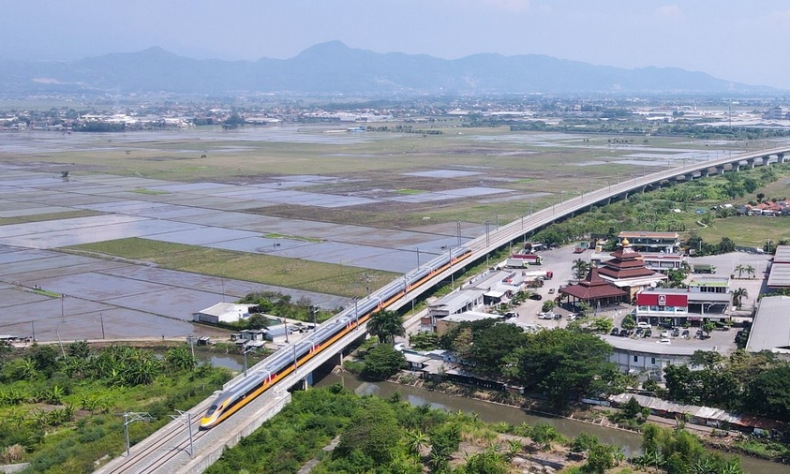Formidable China-ASEAN Ties Set Sights on Future

A deepening China-ASEAN partnership not only puts win-win cooperation at the core of the regional cooperation agenda but presents a valuable roadmap for peaceful coexistence that benefits a community with a shared future.
Chinese Premier Li Qiang recently attended the leaders’ meetings on East Asia cooperation in Jakarta, Indonesia, emphasizing stronger China-ASEAN ties and fruitful regional cooperation prospects. He attended the 26th China-ASEAN Summit, the 26th ASEAN Plus Three (APT) Summit, and the 18th East Asia Summit, saying, “China is ready to work with ASEAN countries to stay true to the original aspiration of unity and self-improvement and uphold the spirit of win-win cooperation so as to build a common home of peace, tranquility, prosperity, beauty, and friendship,” in his address at the 26th China-ASEAN Summit.
Proposed completion of version 3.0 of the ASEAN-China FTA negotiations by 2024 and acceleration of the Regional Comprehensive Economic Partnership (RCEP), signal substantive gains for the China-ASEAN relationship in their shared regions. At the same time, heightened prospects for development synergies between China’s Belt and Road Initiative (BRI) and ASEAN’s Indo-Pacific Outlook reflect positively on shared aspirations for a closer community with a shared future.
Under this year’s chairmanship by Indonesia, a major focus of the leaders’ meetings revolved around helping to dial up economic integration among ASEAN economies and facilitate innovative partnerships to resolve pressing regional security issues. Beijing’s profound support for ASEAN’s strategic autonomy and centrality in regional affairs has been key to their decades-old relations. That sense of endurance is likely to benefit further as both sides adopt a series of new outcome documents, deepen cooperation across emerging sectors, and aim to supplement a $519 billion-strong trade volume beyond the first seven months of this year.
Li’s proposal to build an economic growth center among the ASEAN countries may significantly elevate time-tested economic relations. It provides long-term incentives for integrating emerging industries, compliments future collaborations in green agriculture development, and gives solid footing to enhance science and technology innovation, as agreed during the summit. Similarly, China’s four-point vision to realize a shared community with ASEAN also puts a premium on enhancing interconnectivity. This brings into focus their substantive support for key engines related to multilateral trade and economic integration, including the 15-member RCEP.

In recent years, China’s wide-ranging developmental cooperation with ASEAN has moved from strength to strength. Consider the lasting impact of Chinese enterprises on Indonesia’s swift progress in the digital economy and the operation of more than 6,500 Chinese enterprises with direct investment in ASEAN. Together, China and ASEAN are projected to contribute nearly 40% to world economic growth this year, making it critical to optimize regional industrial and supply chains to facilitate growth in the face of economic pressures. Constructive engagements at the summits have given way to accelerating version 3.0 of the ASEAN-China FTA negotiations by 2024, a major input to expediting the free flow of goods in one of the most consequential parts of the world.
Interestingly, one of the strengths of the China-ASEAN comprehensive strategic partnership is the value it puts on maintaining regional peace and stability. Li’s recommendation to collectively oppose a new cold war is in line with ASEAN and China’s support for the peaceful resolution of differences and consensus-driven diplomacy. A case in point is the steady progress of the South China Sea Code of Conduct (COC), which serves the mutual purpose of promoting enduring peace and coexistence in the region. Strategic mutual trust stands to deepen further as Beijing and ASEAN uphold the principle of noninterference and work towards protecting future progress from the perils of external forces. “The most effective way to clear up misunderstandings is to strengthen exchanges and increase mutual understanding and trust through sincere communication,” said Li at the 26th ASEAN Plus Three (APT) Summit.
APT’s past success in withstanding numerous conflicts and crises makes its continuity a pivotal consideration for desired peace and development in the region.
Thus, it is understood that a deepening China-ASEAN partnership not only puts win-win cooperation at the core of the regional cooperation agenda but presents a valuable roadmap for peaceful coexistence that benefits a community with a shared future.
Hannan R. Hussain is a foreign affairs commentator, author and recipient of the Fulbright Award.
 Facebook
Facebook
 Twitter
Twitter
 Linkedin
Linkedin
 Google +
Google +










